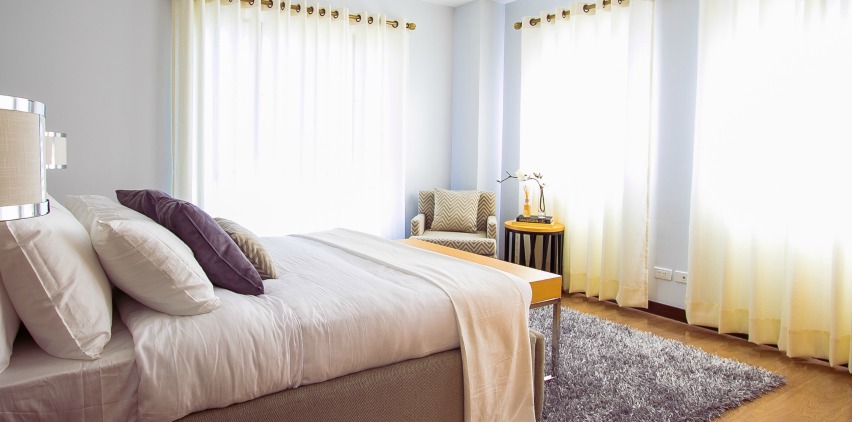

September 10, 2019 | Categories: Sleep
If you’re living with a breathing disorder like asthma or chronic obstructive pulmonary disease (COPD), spring cleaning isn’t simply a chore to tackle on your to-do list. If it’s not done properly, cleaning could trigger asthma symptoms or send you into an asthma attack.
Learn about how mindfulness can improve your sleep.
Since we spend about a third of our day sleeping, making sure your bedroom has minimal asthma triggers is of utmost importance. Here, we’ll share environmental factors in your bedroom that can exacerbate asthma triggers.
Could Your Bedroom Environment Hurt Your Sleep and Breathing?
You’ve got hungry dust mites living there.
“Airborne allergens are the most common asthma trigger, and the most common airborne allergen trigger is dust and and dust mites.” says Cheryl Nickerson, registered respiratory therapist and certified asthma educator. Microscopic dust mites live in cloth surfaces, such as pillows, mattresses, and blankets that come in contact with our bodies. “They like these environments because they survive by feeding off dead flakes of skin that we shed and become trapped in our bedding,” says Nickerson. After they eat our skin, their waste products and mite body parts trigger asthma symptoms. (Eww. Is anyone else scratching while reading this?) While these critters can be found anywhere in your home, they tend to be found in highest numbers in our bedrooms.
General recommendations, to help reduce the number of dust mites lingering in your bedroom, take action:
Myths and Facts about Caffeine and Sleep.
Your humidifier could be doing more harm than good.
While you might think that running a humidifier will help you breathe better by adding moisture to dry air (particularly in the winter), for many people, a humidifier can contribute to asthma triggers, says Nickerson. While dry air can irritate eyes, skin, sinuses and the airways of lungs which can contribute to an increase in asthma and sinus symptoms, it’s important to strike a balance in humidifying the air in our homes, she advises.
“Overuse of humidifiers may result in growth of mold and mildew and promote dust mite infestation,” she says.
Some general tips to keep in mind when selecting a humidifier:
Could your sleep position impact your sleep?
Fido and Fluffy could be triggers.
It’s time to be a disciplinary owner if your dog or cat sleeps on your bed. “Even if you’re not allergic to your pet, keep the pet out of the bedroom,” says Nickerson. Pet dander is a source of allergens. The dander (flakes of skin) are also food for dust mites. So make sure you keep your bedroom door closed while you’re sleeping and while you’re away to help prevent them from napping there. (Get tips on how to keep your dog safe during the summer.)
You love fresh air in your room.
“Over the last few years, there has been substantial amount of focus on indoor air quality and the health risks associated with the substances in the air of our homes,” says Nickerson. Usually the best way to address this risk is to control or eliminate the sources of indoor pollutants (perhaps scents from cleaning or candles) and ventilate your home with clean, outdoor air.
Remember that air conditioners are not the same as air cleaners. “They reduce relative humidity in our homes which will reduce the growth of dust mites but they don’t adequately clean the air,” says Nickerson. Even if you’re running your air conditioner, make sure you use an air cleaning system as well.
“Keep in mind that usually one intervention isn’t enough, so multiple interventions may be required to adequately control dust, dust mites, and other allergens over the long run,” says Nickerson. Bottom line: If you or someone in your home has allergies, “spring cleaning” is much more than a seasonal project. You’ll need to clean your bedroom at least once a month and reduce clutter, which also may contribute to allergies and health problems.